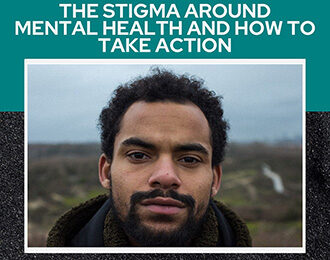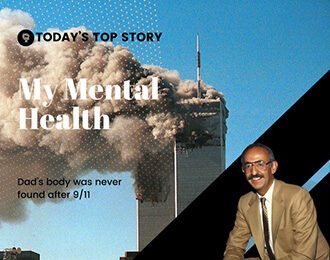The State of Mental Health in America 2021: Adult Prevalence and Access to Care

By Darice Warren for Next Step Solutions
The 2010 Patient Protection and Affordable Care Act, also known as the ACA, expanded healthcare access and affordability. A portion of the ACA, known as the Mental Health Parity and Addiction Equity Act (MHPAEA), strives to ensure that mental health and substance use disorders receive equal treatment as any other health condition. But how well it’s working has been a subject of vigorous debate.
Each year, Mental Health America (MHA) releases its State of Mental Health in America report. The nonprofit mental health advocacy organization, founded in 1909, uses this data to track and understand the status of mental health, as well as the success or failure of different federal, state, and local policies across the United States.
This is a comprehensive and detailed report, but it cannot account for all factors. There was no way to predict the COVID-19 pandemic and the vast, nationwide mental health crisis it would trigger. The data in the 2021 report was gathered before the pandemic, but it does touch on the effects of COVID-19, as seen through a different data collection method.
The State of Mental Health America is a vast project covers both adult and youth mental health, so we’ve chosen to break the study into two parts. Here, we will look at the findings specific to adults, and how it differs from last year’s data.
Key Takeaways
- Even pre-COVID, 19% of adults experienced some form of mental illness, climbing from 18.57% in last year’s report
- Over 1.5 million more people reported a mental illness as compared to last year
- Suicidal ideation in adults grew by 0.15%, or by approximately 460,000 people
- The percentage of adults with a mental illness reporting an unmet treatment need remained at 24%, a number that has not declined since 2011
- The uninsured rate for Americans with a mental illness climbed to 10.8%, the first increase since the enactment of the ACA
- Adult substance use rates declined very slightly, from 7.68% to 7.67%
Prevalence of Mental Illness
In this year’s study, the prevalence of adult mental illness in the United States rose from 18.57%, or roughly 45 million people, to 19%, or approximately 47 million people. The rate of severe mental illness also grew slightly from 4.38% to 4.55%. Suicidal ideation also continues to increase, with more than 10.7 million people reporting serious thoughts of suicide. This is an increase of nearly half a million people, year over year. Though substance use rates declined very slightly, it’s important to note that there is a strong overlap between mental illness and substance use, and some adults are facing both challenges at the same time.
Access to Care
The percentage of adults with mental illness who received no treatment remains well over 50%, affecting 26 million people. Nearly 24% still report an unmet treatment need, a number that has remained constant since 2011. The percentage of adults living with a cognitive disability who could not see a doctor dropped slightly, from 29.4% to 28.7%.
For the first time since the ACA was enacted, the percentage of adults with mental illnesses who are uninsured rose, which may be attributed to the removal of the individual mandate penalty. It’s now up to 10.8%, or more than 5.1 million people.
Other barriers to care remain the same as last year, including lack of availability of mental health professionals within the community, inability to access specific treatment types, insufficient funds to cover out of pocket expenses, and a disconnect between the primary healthcare system and the mental healthcare system.
Variations by State
As we have learned over the past year, the United States is anything but uniform. Every state has its own public health advisors, political concerns, and ways of doing things.
Consequently, both the prevalence of mental illness and access to care vary widely based on where you live.
Though the overall rate of adults with mental illness who are uninsured has risen since last year, uninsured rates went down in 20 states. Louisiana had the most dramatic decrease, dropping by 5%, followed by South Dakota (3.3%), Kentucky (2.4%), and Kansas (2.2%). Uninsured rates for adults with mental illness range from 2.5% in Washington DC to 23% in Wyoming.
Interestingly, unmet mental health needs do not necessarily track with rates of uninsured adults. The percentage of people reporting an unmet mental health need ranges from 12% in Hawaii to 31.6% in Kansas, while the percentage of adults with mental illness who received no treatment at all ranges from 42.8% in Vermont to 65.8% in Hawaii.
Putting It All Together
To account for these state-by-state disparities, Mental Health America has created a state ranking system. The rankings have shifted year over year, with some states improving and other getting worse. With the combined adult and youth datasets, Vermont takes top marks in Overall Ranking this year, up from third last year. Pennsylvania dropped from first to second, and Massachusetts is third. Nevada is ranked last for the second year in a row, with Idaho and Alaska rounding out the bottom three. When ranking solely for adults, Hawaii retains the top spot, followed by New York and New Jersey. The lowest marks go to Utah, Alaska, and Oregon.
The results show that mental health in America continues to worsen, even before factoring in the effects of COVID-19. Those who live in states that have expanded Medicaid and are actively working to improve mental health parity tend to fare better than those in states who have not made these topics a priority.
COVID-19
COVID-19 swept the globe in 2020, too late to be included in the dataset for this report. However, an addendum to the report, based on MHA’s online mental health screenings, shows that mental health issues are accelerating at a shocking rate. The number of people taking an anxiety screening increased a stunning 93% from 2019 to 2020, while the number of people taking a depression screening rose by 62%. More than 8 in 10 of those who took a screening had moderate to severe symptoms, and 37% of those who took the depression screening had frequent suicidal ideation—the most ever reported since the screening program began in 2014.
It will take time to understand the long-term impacts of COVID-19 on the overall state of mental health in America. But it is easy to see that at least in the short term, the pandemic has touched off an unprecedented mental health crisis that was already at a critical level.





